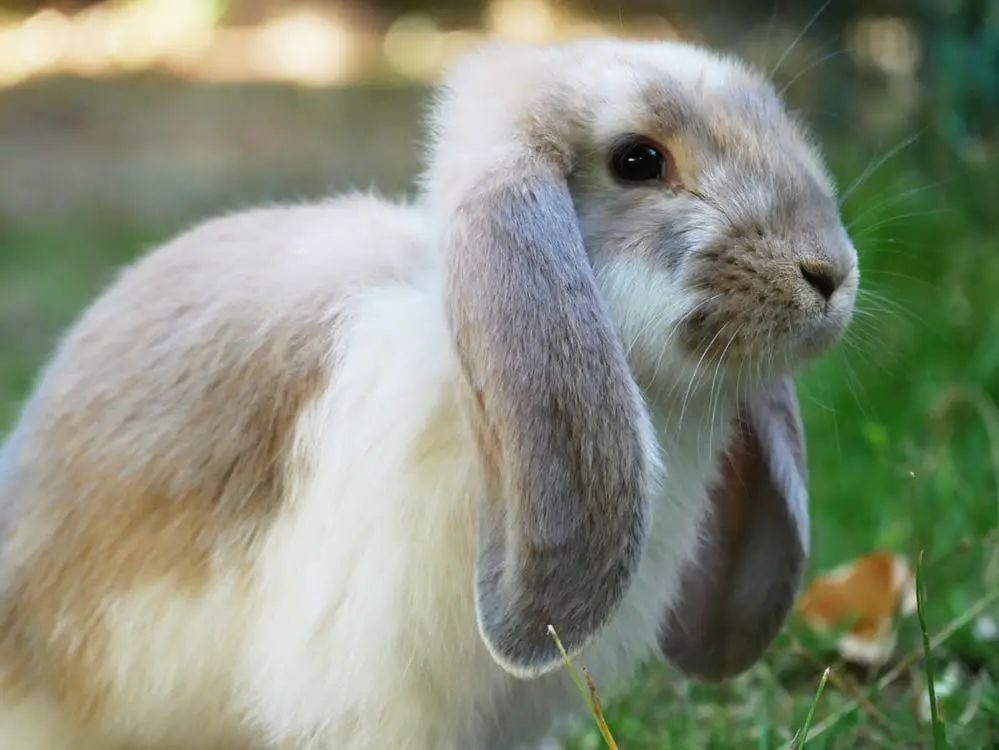Basic Appearance:
Giant and cuddly, French lops are the largest breed of lop rabbits. In fact they are the only lop considered a “giant” breed. They are gentle giants with a commercial body type and glossy rollback fur. Their ears are not as long as English lops’, they are well-shaped and fall open without folding over.
History, Temperament, and Common Uses:
French lops were named after their country of origin. They were developed in France, and were first shown in that country in 1850.
French lops are cuddly, gentle giants. Breeders who don’t have the space to raise these large rabbits often like to have just one as a pet.
French lops are most commonly used as show rabbits, though with their large, commercial type they can also be used for meat. In fact, they can be shown in the meat classes. French lops also make good pets, as long as you keep in mind that these rabbits are at least 11 pounds, and will need roomy cages.
Grooming, Care, and Additional Notes:
French lops have a rollback coat, which needs little grooming. Simply brushing it once a week should be enough to remove loose fur. When they are molting more grooming may be necessary.
French lops are active when growing, but they usually become very docile as adults.
Watch the French lop’s condition, they tend to get a little flabby. They can develop a “skirt” of loose skin around their hindquarters.
French Lop At A Glance…
Recognized Varieties:
French lops are shown in two color classifications: broken pattern and solid pattern.
Broken Pattern: broken and tri-colored
Solid Pattern: chinchilla (black, blue, chocolate, lilac, sable, smoke pearl), chestnut agouti (black or chocolate), lynx, opal, pointed white (black, blue, chocolate, lilac), black, blue, chocolate, lilac, white (red eyed, blue eyed), frosted pearl (black, blue, chocolate, lilac), sable, sable point, seal, smoke pearl, tortoise (black, blue, chocolate, lilac), silver/silver fox (black, blue, brown, fawn), steel (gold or silver tipping)(black, blue, chocolate, lilac, sable, smoke pearl), cream, fawn, orange, and red.
ARBA Body Type:
Commercial
Approximate Size:
10 1/2 pounds and over.
Important Things to Look for When Buying Show Stock:
A massive, thick body, somewhat like a New Zealand. They should be well muscled, and feel like a boulder. Wide shoulders, midsection, and hindquarters should be broad, full, and deep. Shoulders should taper to a slightly wider hindquarter. The body should be smooth, with the topline starting at the base of the ears to rise to a high point over the hips in a gentle curve, and round down to the tail. Does may have a simple dewlap.
The head should be strong and sturdy, but may be slightly feminine in does. The crown should be curved, and the head should show a slight curve from the ear base to the muzzle. Look for well-placed ears that lop vertically on both sides of the head, and a strong crown. The ears should hang close the head, with the openings facing inwards. The outline of the ears and crown combined should resemble a horseshoe shape. Ears should extend at least 1 1/2 inches below the jaw, but they should still be in proportion to the rabbit’s size. The ears should be well covered in fur and rounded.
Look for good bone, heavy bone is very important in the French lop. The legs should be thick, straight, and short. They should be parallel with the body and not cow hocked in any way.
Fur should be rollback, glossy, and about 1 1/4 inches long. It should be uniform and dense over the entire rabbit.
Things to Avoid:
A long, narrow, or flat body. Hindquarters that are chopped or undercut. Junior does with large dewlaps. Long, narrow head or flat crown. Pointed muzzle. Blemished ears, ears with poor carriage, narrow, folded, or thin ears. Ears that turn out away from the rabbit’s cheeks. Weak ankles. Broken patterned rabbits with unmatched toenails. Fine bone is a disqualification. Fur that is silky, long, harsh, thin, or very short. Refer to specific colors for faults and disqualifications in each variety.
Link to National Specialty Club
French lops share a national specialty club with English lops.

